History
San Clemente, a place where one encounters centuries of Rome’s History
A 2000 Year Story
The basilica of San Clemente is one of the most fascinating churches in Rome, not only because of its wonderful art but also for the fact that here in the different layers of this complex, one can witness the growth of the city of Rome down the centuries. The church is situated about 300 meters from the Colosseum, on the road that leads to the Lateran Basilica. It nestles in a valley between the Caelian and Oppian hills. The church takes its name from Pope Saint Clement, the third successor of St Peter, who died around the year 100 AD.
Up to about 165 years ago, it was generally held that the present church was the ancient church of Saint Clement mentioned by Saint Jerome in the 4th century. Writing about St Clement, he wrote that a church in Rome preserved the name and memory of St Clement up to his own day, – nominis eius memoriam usque hodie Romae extructa ecclesia custodit. However, in 1857 Father Joseph Mullooly, the prior of San Clemente, realised that the ground level was much deeper in the past, excavated under the present church and discovered the original 4th century basilica underneath the present one. Digging underneath this ancient church, he uncovered another, even deeper, complex of buildings of the 1st century.
Subsequently other excavations were carried out, especially when in 1912-14 Father Louis Nolan built a drainage tunnel between San Clemente and the Colosseum to carry away water that was flooding the lower levels. These excavations, revealed the remains of buildings destroyed in the fire of Nero in 64 AD.
More recent excavations have uncovered the baptistry and the sacristy of the lower church. The baptistry area is monumental in size, with a great baptismal font and some very fine frescoes. The sacristy or secretarium has the remains of a 6th century marble floor. These discoveries are significant contributions to our understanding of the liturgy in 6th century Rome.
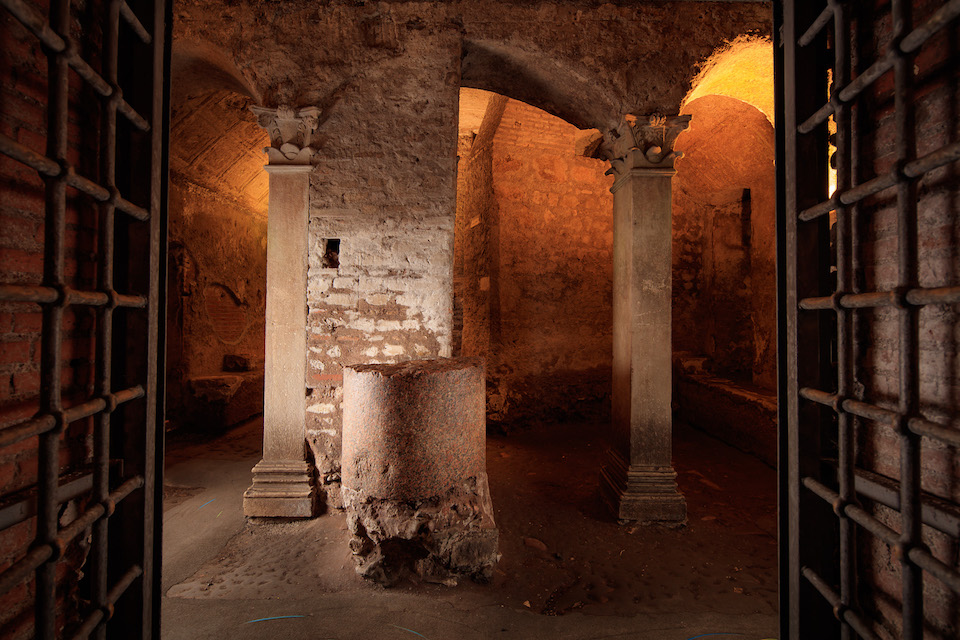
How did all these ancient buildings become buried so deeply? In the 1st century, the street level in the area of San Clemente was some 20 meters below that of the presentday. After the fire of 64 AD, the ruined buildings were abandoned, filled with earth and used as the foundations for new structures. These buildings were at a level more or less corresponding to that of the floor level of the Colosseum today
At this new level, two 1st century buildings, separated from each other by a narrow laneway were constructed. The smaller of the two buildings, built in brick, was most probably a Roman house, a domus. It was at least 3 stories high and was built around a central courtyard. The lowest level to which the present access steps lead down was a semi-interred area with crypto portico or underground gallery and a grotto-like vaulted area probably used as a dining area in the summer months. Around the end of the 2nd century this underground area was transformed into a temple complex by the followers of the Mithraic religion.
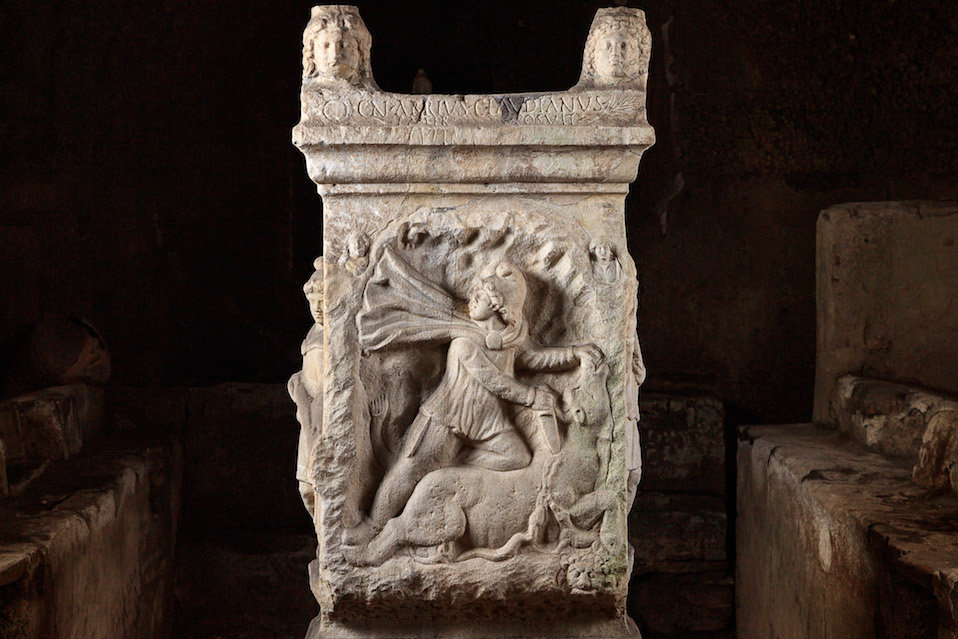
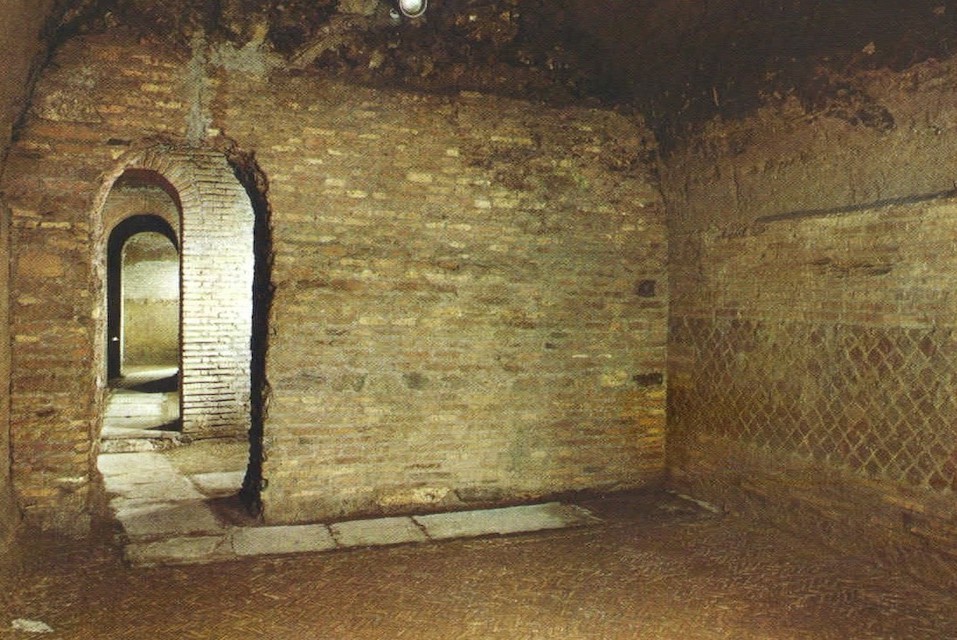
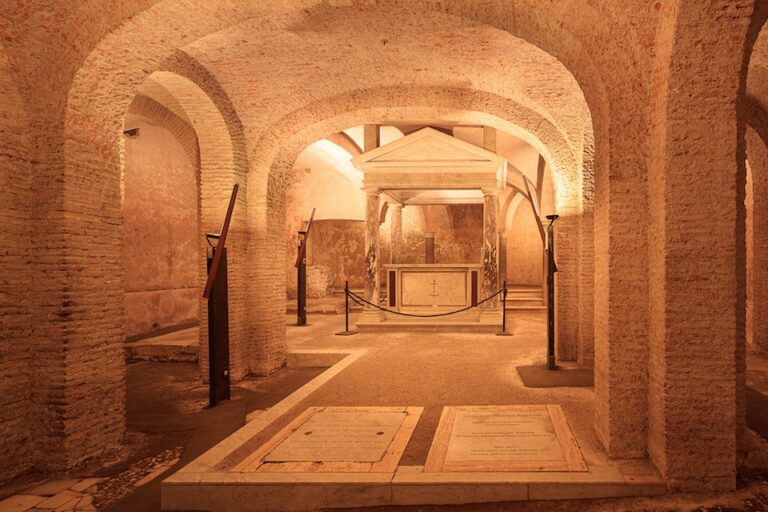
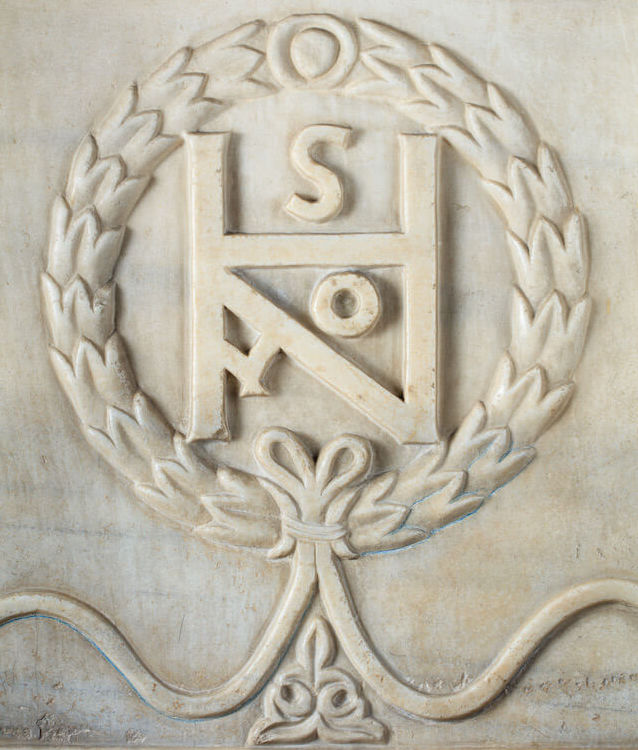
The lower basilica was abandoned about the year 1100. By this time the street level had risen considerably, a situation which most probably gave rise to the need to build a church on a higher level. Foundation walls were built, relics and marble were removed to the new church and the old basilica was filled with rubble to the height of the capitals. The old walls rising above the rubble were used for the construction of the smaller 12th century basilica as can be seen from the arches at the sacristy door today.
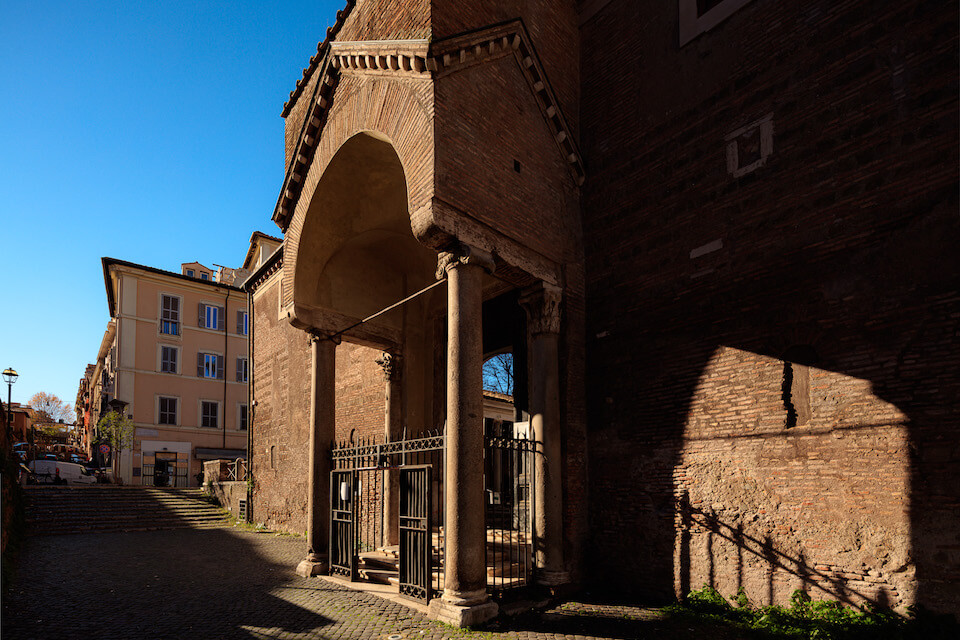
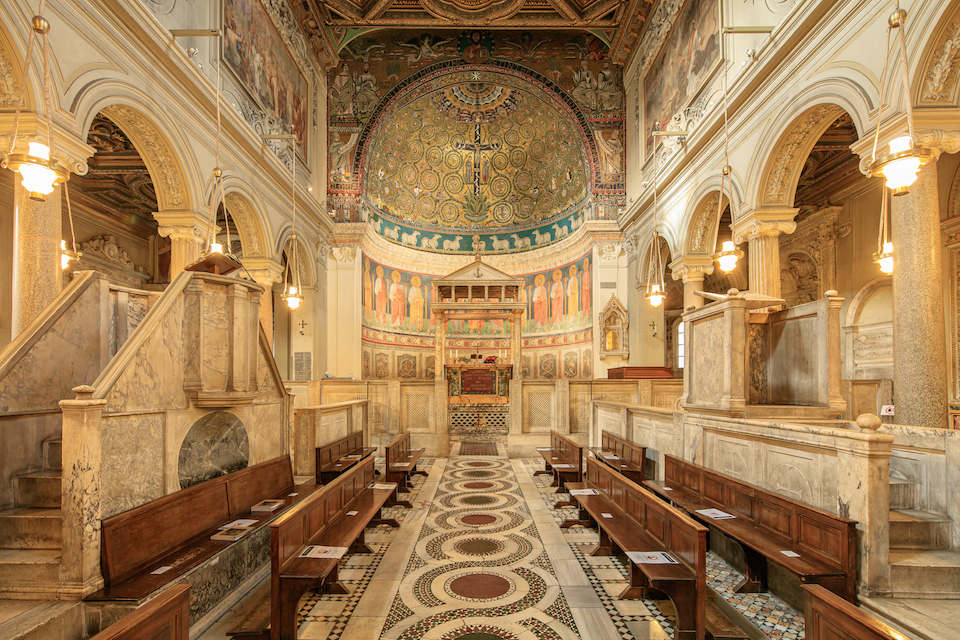
Inside the basilica, the mosaic of the apse, the cosmatesque floor, the marble choir or schola cantorum with its amboes, the throne or cathedra in the apse, were all original elements of the church. In this period, as in later ones, the walls of the aisles were covered with frescoes, fragments of which remain today.
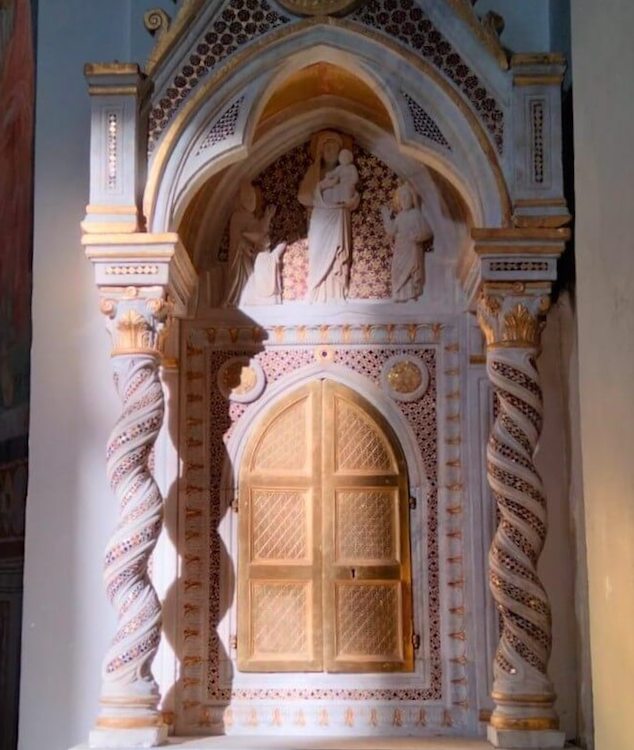
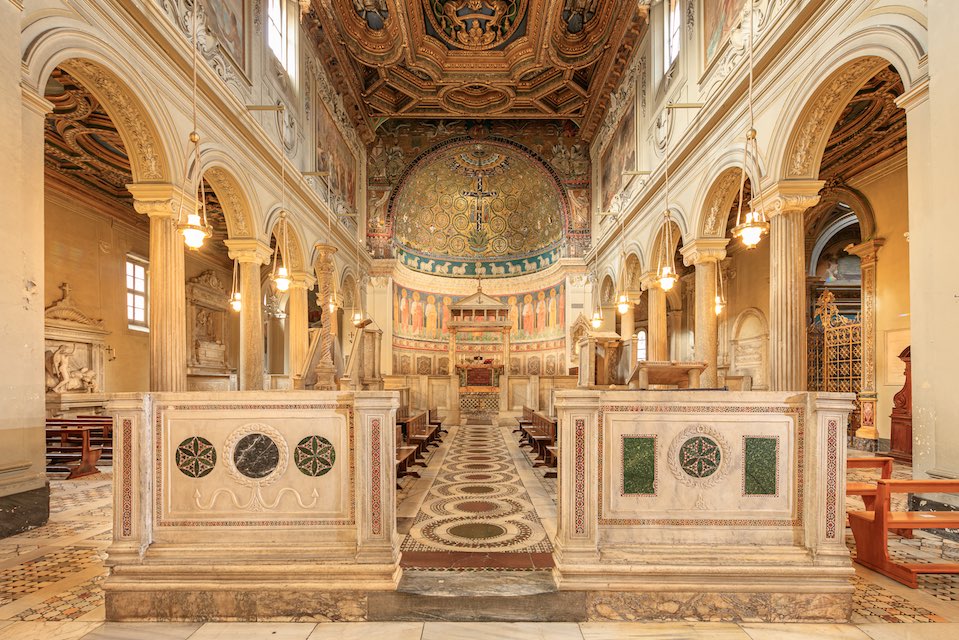
So, the new San Clemente which we know today was built at this new level and the existence of the old basilica was forgotten until, it was rediscovered and brought to light between 1857 and 1870, through the excavations of Father Mullooly and the help of Giovanni Battista de Rossi, the father of Christian Archaeology.
In its early years this new San Clemente had a community of Canons living in a canonry attached to the basilica. Then in 1403, Boniface IX gave the care of the basilica into the hands of Ambrosian monks, a recently founded monastic community. The Ambrosians had charge of the basilica until 1643.
In 1645 the Cardinal titular Camillo Pamphili, nephew of Pope Innocent X, entrusted the basilica into the care of the Dominicans of San Sisto. In 1667, Cardinal Maidalchini, successor of Cardinal Pamphili, gave the property in perpetuity to the Dominican Order.
Ten years later the Basilica and house of San Clemente, together with the Basilica and house of San Sisto Vecchio, in front of the Baths of Caracalla, were given to the Irish Dominicans as houses of study. Because of religious persecution in Ireland, they needed houses abroad where young Dominicans could study and prepare for the priesthood. From 1677 to today, the Irish Dominicans administer and care for the Basilica of San Clemente.
